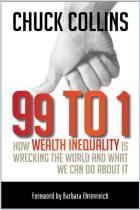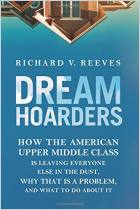
Book
The Velvet Rope Economy
How Inequality Became Big Business
Doubleday,
2020
más...
Adapted from THE VELVET ROPE ECONOMY: How Inequality Became Big Business by Nelson D. Schwartz, with permission from Doubleday, an imprint of The Knopf Doubleday Publishing Group, a division of Penguin Random House LLC. Copyright © 2020 by Nelson D. Schwartz.
ISBN: 9780385543088
Pages: 352
ISBN: 9780385543088
Pages: 352
Recommendation
New York Times economic specialist Nelson D. Schwartz explores the “velvet ropes” that businesses – and, increasingly, public institutions – erect to separate haves from have-nots. The have-nots suffer long lines and shabby treatment. The haves get fast lanes of such improved circumstances that they don’t notice or care about the dilapidation of services for everybody else. These socioeconomic fault lines isolate groups of people from one another – based on ability to pay – and fray the social cohesion that binds communities and creates broad support for their institutions.
Summary
About the Author
Nelson D. Schwartz covers economics for The New York Times.

















Comment on this summary or Comenzar discusión